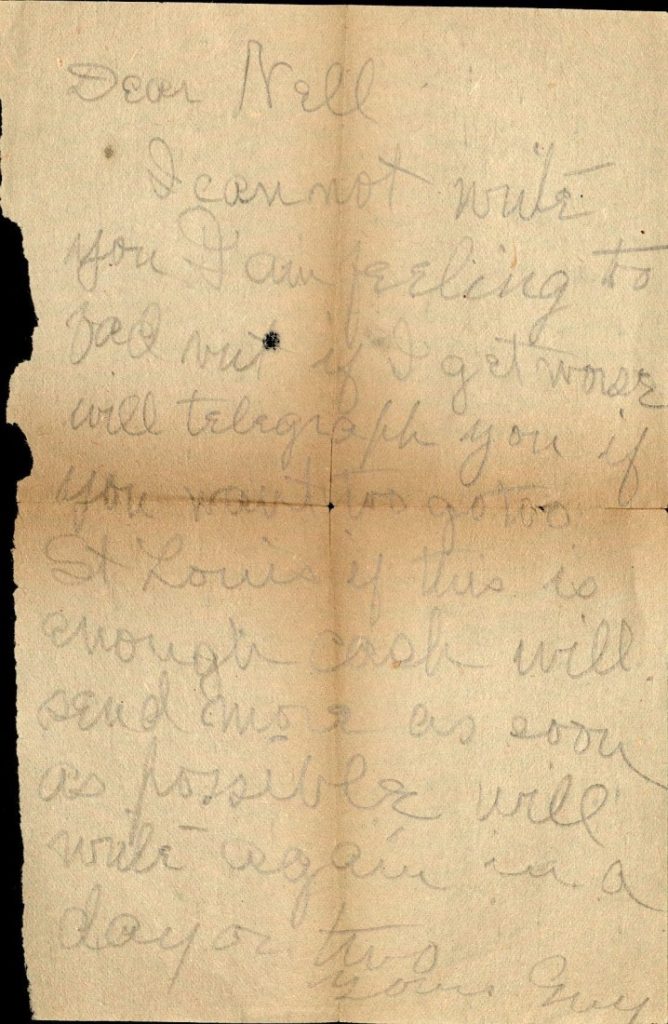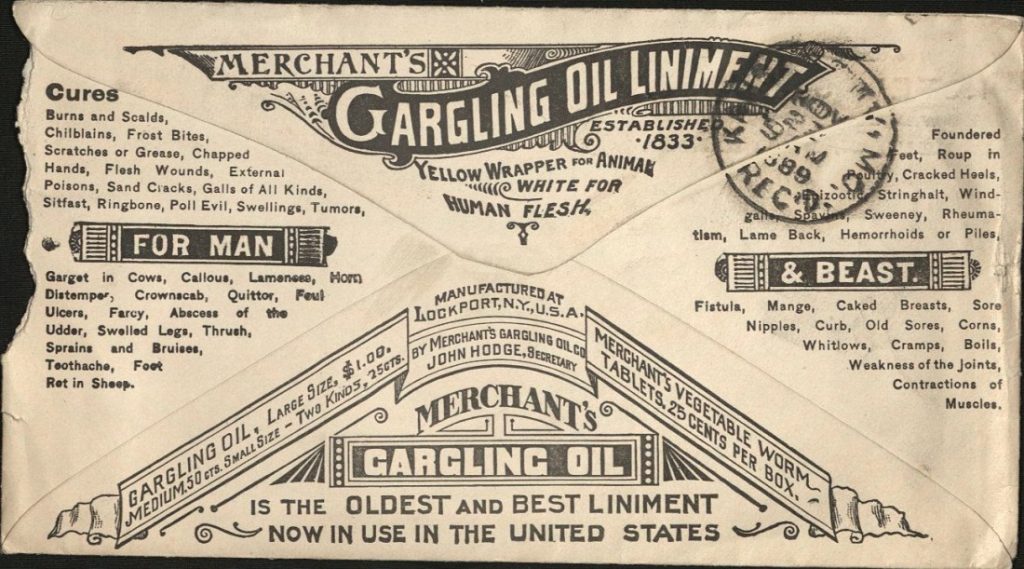A “Dead Rank Jonah”: The Unlucky Travels of Guy Hatfield
October 25th, 2023The letters of Guy Hatfield are a collection of 50 letters written by a traveling salesman to his wife, Nell, living in Kansas City, Missouri. He made his living traveling throughout the Midwestern United States. His letters document his travels between Iowa, Nebraska, Kansas, Oklahoma Territory, Colorado, Missouri, and Illinois, all in the hopes of making a quick buck. Though little is known about Guy Hatfield’s life outside of the collection of letters here at Spencer Library, he is associated as a contemporary of the better-known George B. McClellan, a traveling medicine man and Wild West showman. [i]
Guy’s letters to his wife, Nell, give a window into his business life as a traveling salesman. Rarely was business good. Inclement weather would keep the townspeople in their homes and slow business. Sometimes “biz” (as Guy called it) in company towns was centered around payday; setting up shop at the right time was key. Risk of illness and outbreak of the “grip” (also written as grippe, an old-fashioned term for the flu) could also be a detriment to business.

The letters give a wealth of information beyond Guy’s correspondence to his wife. His travels, most often by train, show the rail network in the Midwest and Great Plains around 1890. The stationery and envelopes, bearing the names and proprietors of the hotels Guy stayed at, give us a list of the hotels and innkeepers that served travelers as they crisscrossed the country.


So what exactly did Guy Hatfield sell? His letters mention glasses and figurines (mislaid and broken by the railroad company), wigs, a mummy, a gorilla, a skeleton (in one letter, a gorilla skeleton), and medicine (though he does not say if it is for resale or personal use). In one of his letters, he mentions his attempts to sell his whole museum to one or more interested parties in Wichita, but bad luck seemed to prevent the sale from going through. He blames an associate named Converse, who he calls a “dead rank Jonah.”
Whatever it was Hatfield was trying to sell, few were interested in buying. With a few exceptions, the common thread through the letters are complaints of low revenue, high expenses, and excuses for why he cannot yet come home. The letters begin in October 1889 in Sioux City, Iowa, where Guy complains about losing lots of money. In the last letter, dated February 25, 1892, he is staying in Pittsburg, Kansas, a couple days longer with hopes of making a few dollars. As to his association with the famous George McClellan, a letter from January 22, 1891, suggests the nature of their friendship: “George has not answered any of my letters at all nor sent me a cent[.]”
Beyond these three years of flourishing (if we can call it that), little is known about Guy Hatfield or his wife Nell. The Kansas City addresses on the envelopes no longer exist. A search of digitized newspapers reveals two stories of a Guy Hatfield, who may or may not be the same as our ambitious and unlucky letter-writer. A newspaper report in the Kansas City Journal from January 1898 tells the story of a salesman of the same name attempting suicide in a saloon; a report from the Topeka State Journal from July of the same year reports on the impending execution of a soldier bearing the same name, who, “in a drunken row soon after pay day,” stabbed another soldier to death.
When we think of archival collections, we often give too much credit to the movers and shakers of history. It makes sense that the Kansas Collection at KU’s Spencer Library would hold the personal and professional papers of governors, senators, and other pillars of the civic community. But there is much to learn about the world of the past in collections like the letters of Guy Hatfield. He lived during an era we like to call the Gilded Age. But through his own words, we are reminded that to many, it may not have been so gilded.
Phil Cunningham
Kansas Collection Curator
[i] Finch, L. Boyd. “Doctor Diamond Dick: Leavenworth’s Flamboyant Medicine Man.” Kansas History: A Journal of the Central Plains 26 (Spring 2003): 2-13. Available online at https://www.kshs.org/publicat/history/2003spring_finch.pdf.
